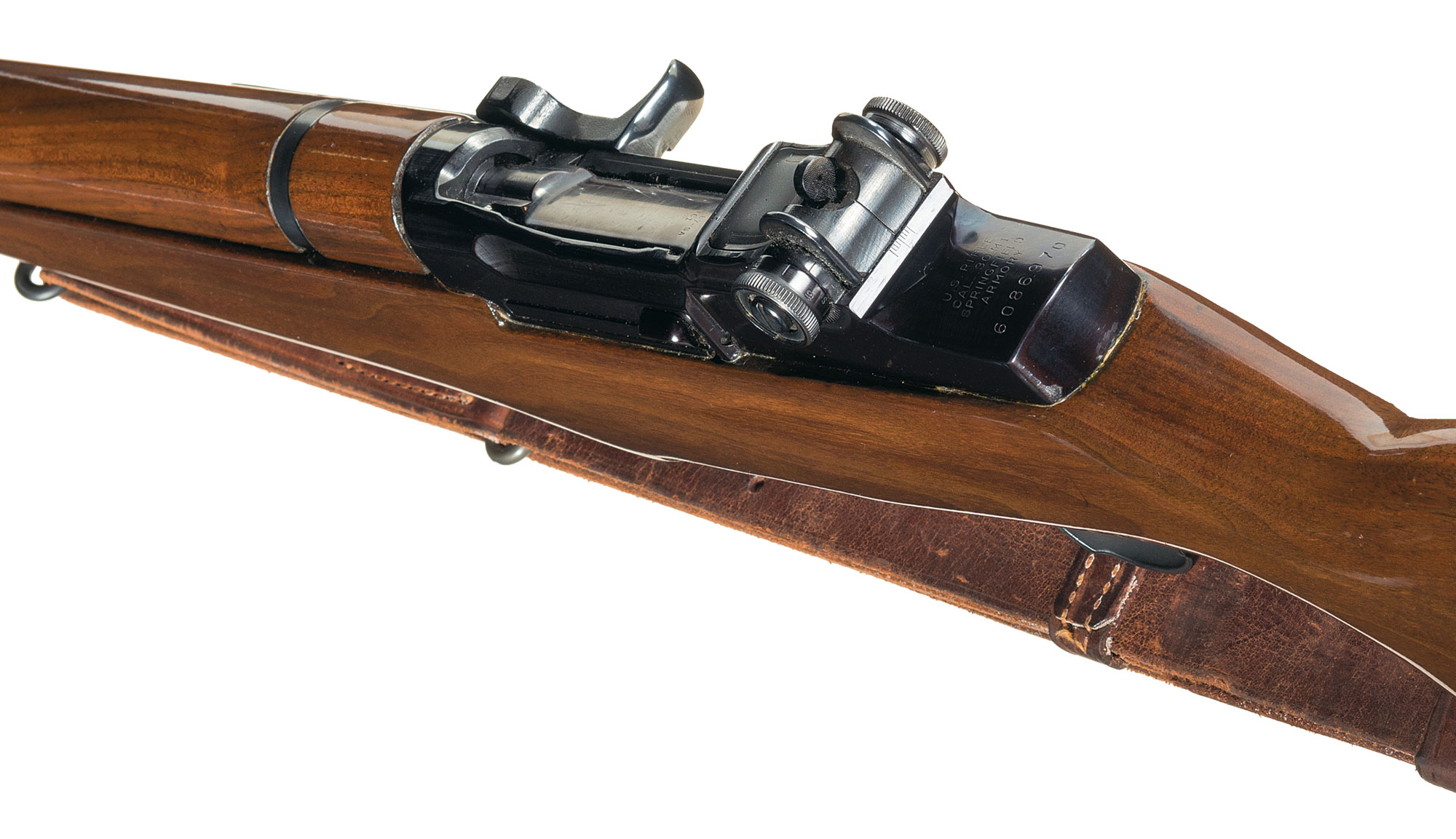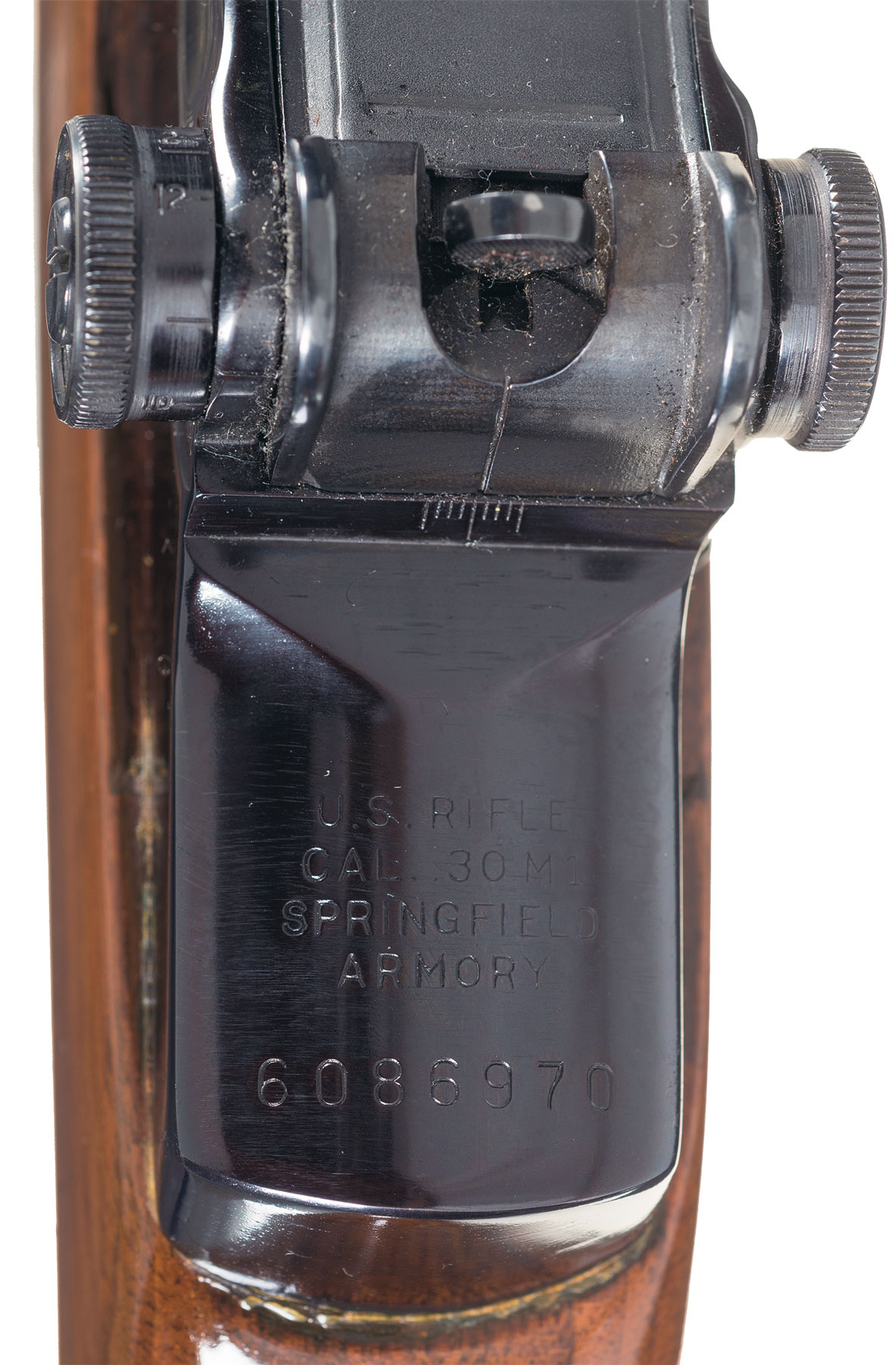

John F. Kennedy was the 35th President of the United States and one of the most famous. He is the youngest person elected to the presidency, the first Catholic president, and the most recent president to have died in office. Kennedy is also well-known for his Naval service during WWII; his survival at sea and rescue of his fellow sailors following the sinking of their PT boat made him a war hero. As a result of his extraordinary life, items associated with Kennedy command a high price when they are put up for sale. However, Kennedy’s M1 Garand rifle is from neither his presidency nor his time in the Navy.

In 1957, the U.S. military introduced the M14 as its standard-issue service rifle and started to phase out the WWII-era M1 Garand. Surplus M1s were turned over to the Office of the Director of Civilian Marksmanship, the forerunner of the modern Civilian Marksmanship Program. Administered by the Army, the DCM was authorized to sell surplus M1s to civilians who belonged to marksmanship clubs and organizations. However, the small supply of surplus rifles and high demand from the qualified public necessitated a lottery system to select prospective buyers. In 1959, a second-term senator from Massachusetts won the M1 lottery; his name was John F. Kennedy.

After being selected, lottery winners could place their order and a randomly selected M1 would be pulled from a depot to complete the sale. However, Kennedy’s M1 order received special treatment at the direction of Col. John K. Lee, Executive Officer at DCM. Kennedy’s M1 is a very desirable Type 1 National Match rifle with a late-production serial number in the 6 million range. After being “randomly” selected from the Erie Ordnance Depot at Port Clinton, OH, Kennedy’s M1 “happened” to make its way to the Second U.S. Army Advanced Marksmanship Unit at Fort Meade, MD. There, gunsmith Master Sgt. Raymond Parkinson accurized the rifle with the assistance of gunsmiths SP5 William Draper and SP3 Nicholas Rossman.

As noted in Col. Lee’s letter to Kennedy which accompanied the M1, the gunsmiths performed the following work:
- Adjusted the trigger in order to provide an exacting trigger pull for each shot fired.
- Blued all metal parts to prevent rust and enhance the beauty of the weapon.
- Applied a moisture-proof silicon finish to the stock.
- Applied a glass-bedding compound to the recoil shoulders of the stock in order to enable the rifle to maintain its accuracy.
- Air-tested the bore for correct calibration and flaws.
- Test-fired the rifle in a sitting position at 200 yards.
Master Sgt. Parkinson did not conduct the test-firing from a more accurate cradle to avoid scarring the stock. Despite this, Col. Lee wrote that the M1 shot accurately and “as good as any rifle used at the National Matches.” The test target was also included with the rifle and letter.

Kennedy’s “random” lottery M1 was shipped to him in October 1959. On November 19, 1959, Kennedy wrote a letter to Master Sgt. Parkinson, thanking him for “the time and care which you took to accurize and test fire” the rifle. In the May 1967 issue of “The American Rifleman,” Master Sgt. Parkinson revealed that he actually had no idea who the M1 was intended for. Rather, he was told that if he could fix up the rifle in his off-duty time (special attention for a U.S. Senator could not be done on official time), it would reflect a helpful attitude and be appreciated by the recipient. Master Sgt. Parkinson even put together a custom shipping and storage case for the Garand.

It’s very possible that Kennedy’s M1 accompanied him to the White House when he took office in 1961. Following Kennedy’s assassination in 1963, the whereabouts of the rifle were not public knowledge. However, in 1970, the National Rifle Association made a request to the rifle’s owner, asking to have Kennedy’s M1 on loan to display at the NRA Firearms Museum. The museum received the rifle on October 26, 1970.

In 2015, Kennedy’s M1 went up for sale through the Rock Island Auction Company. Estimated to sell for between $50,000-100,000, the rifle’s hammer price was $149,500. It is the second-highest price for an M1 Garand (not counting a prototype 1931 T3E2 or 1924 Type 2 rifle), falling short of inventor John Garand’s personal M1 which sold for $287,500 in 2018 — Garand’s M1 with serial number one million was presented to him upon his retirement from the Springfield Armory in 1953. Kennedy’s M1 included a plethora of extras including Master Sgt. Parkinson’s case, all of the aforementioned letters, and even the Requisition and Invoice/Shipping Document. Kennedy paid $164 for the rifle and $5 for shipping & handling via Railway Express.
